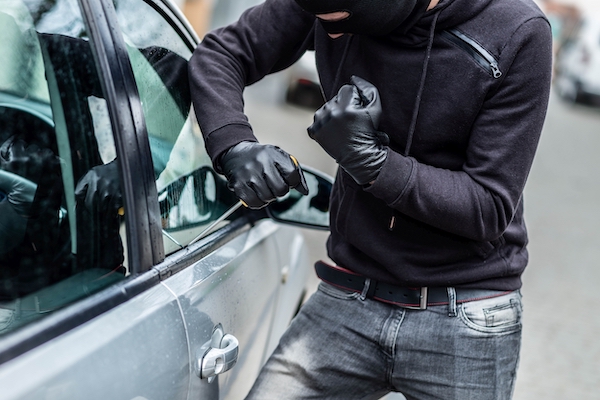What To Do If your Car’s Been Broken Into

All drivers are vulnerable to car theft. And while it’s possible to take steps to make car theft less likely, you may never entirely eliminate the risks of car theft. Opportunistic thieves, and more organised car criminals, may still target your car.
In this post we’ll discuss the steps you should take if you find your car’s been broken into.
What To Do If Your Car Has Been Broken Into
If you come to your car and find that it’s been broken into, you may want to follow these immediate steps:
Assess the damage
Call the police
Call your insurers
Arrange for repairs
Tell anyone else who needs to know – e.g. the owner if that isn’t you, the finance company or the leasing company.
We’ll now go into more detail about each of these steps and what you should do at each stage.
Assess the Damage
Usually, the signs of the break-in will be obvious – a broken window or forced locks. Your car alarm might be sounding, and the thieves may even have left your car’s doors or boot open.
Take pictures of any damage and disengage your car’s alarm if necessary. Also make a list of anything that was stolen, along with an approximate cash value. But apart from this, do not enter your car, and don’t touch or move anything inside.
Remember that your car is now essentially a crime scene. When you tell the police, they may want to gather their own evidence, so it’s important that you don’t contaminate or tamper with anything.
Call the Police
Tell them as much as you can about what was stolen and be prepared to share any evidence you have. This will include the photos you took of the damage.
The police will also ask you a lot of questions about the incident – when and where it happened, how you were parked, where you were when the incident took place, and so on. They’ll then advise you on what you should do next.
They might send an officer to the scene to collect their own evidence. Or they may advise you on what to do to keep your car as safe as possible for the time being – such as through covering a broken window. They may also advise you on whether or not it’s still safe to drive your car, based on the damage it’s sustained.
Contact Your Insurers
You will have to notify your car insurers about the incident. Tell them exactly what happened and give them the police report number. They can then advise you on your next steps, even if you decide not to make a claim and to pay for any repair costs yourself.
Arrange For Repairs
You may have to drive your car home from a public place, and the police and your insurers may advise you on the safest way to do this.
Book your car into a garage as soon as you can. Trained mechanics can fix any broken locks or windows while also assessing your car for any structural damage that could affect your road safety.
These repairs could be costly. But if you have appropriate car insurance, you should be covered.
Tell Anyone Else Who Needs to Know
If the break-in occurred in a public car park, inform the owners. They might be able to assist the police in their investigation with CCTV footage and other evidence.
But if the break-in occurred on your street, tell your neighbours. It’s common for thieves to focus on particular areas. So if they’ve broken into your car, they may return to target other vehicles in the area. Let your neighbours know what’s happened, and they can then take additional steps to secure their vehicles.
Also, your neighbours may have seen something relating to your car’s break-in. They might be able to help you get the justice and the settlement you deserve.
Are You Covered For Car Theft?
Third party with added fire and theft insurance can cover you for any damage your car sustains following a break-in attempt. But for total peace of mind, get comprehensive car insurance, which can cover you for most of the losses and damages associated with car theft.
This will link to one of the other October posts written this month, about preventing break-ins.







